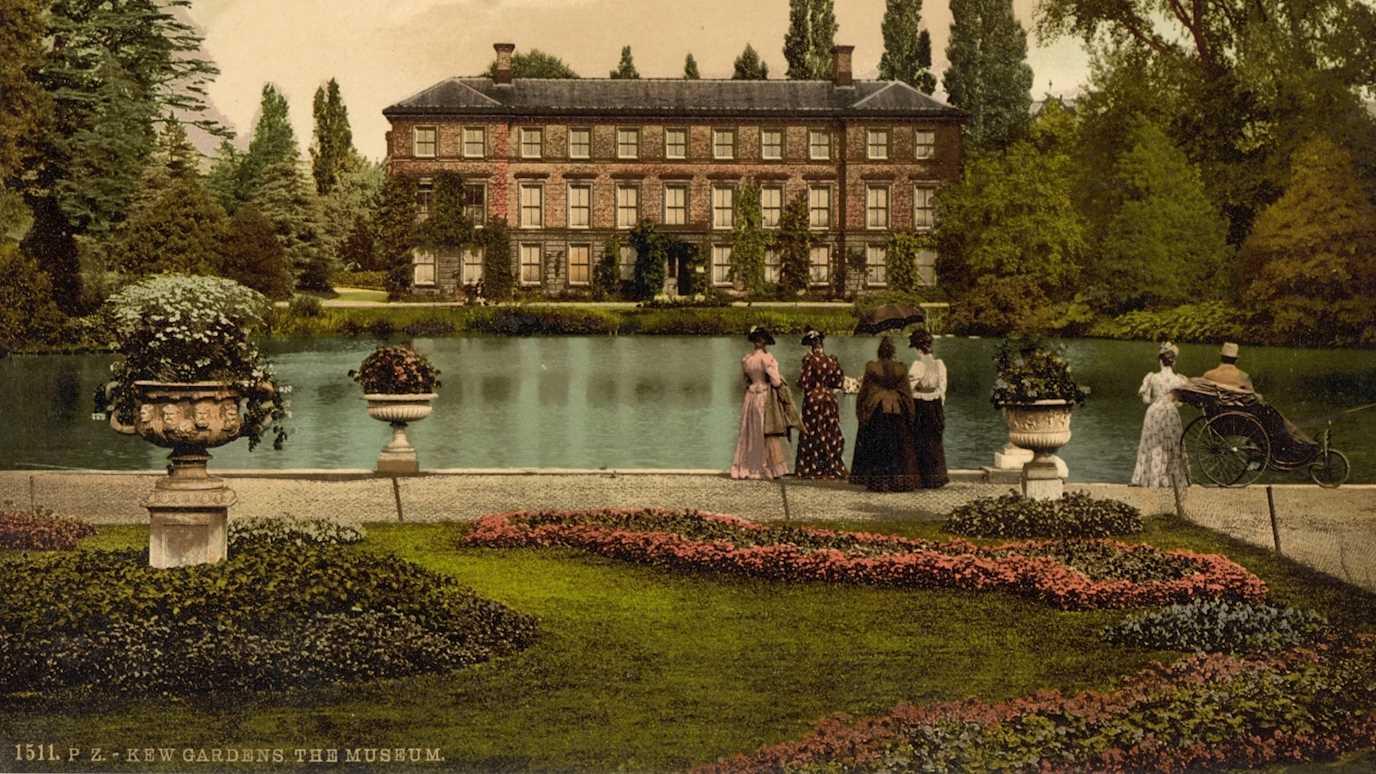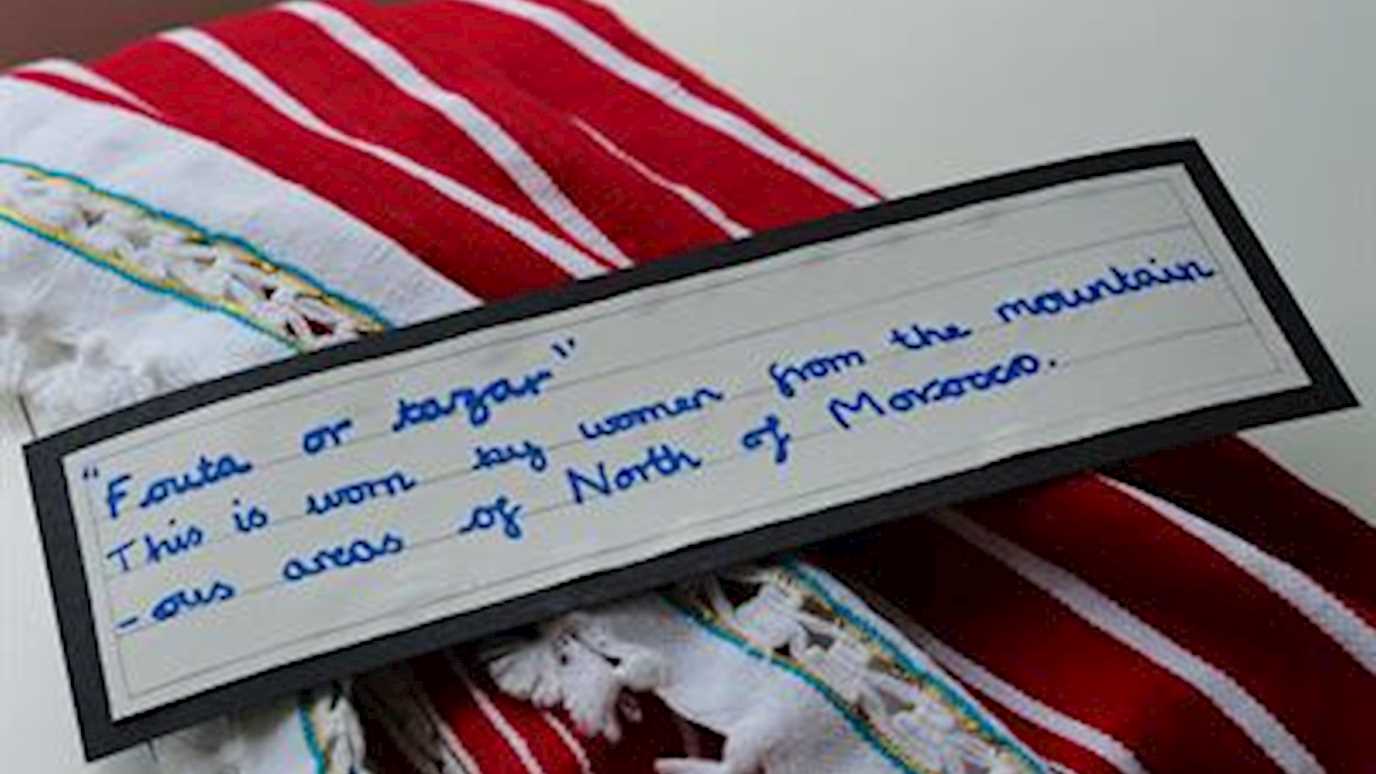Posted on 21/11/2019 by Caroline Cornish & Felix Driver
When we started out on the Mobile Museum project in January 2017, aiming to track down tens of thousands of objects dispersed by Kew’s Museum of Economic Botany in the 19th and 20th centuries and their role in the wider history of botanical circulation, little did we know that historical collaborations between our own institutions – Royal Holloway and Kew Gardens – would form part of this story. This shared history includes the work of two remarkable women who played key roles in the development of science at Bedford and Royal Holloway, the two colleges which merged in 1985 to form Royal Holloway, University of London.
Royal Holloway botany lab, late 1890s (from the archives of Royal Holloway, University of London)
In December 1891, Catherine Alice Raisin (1855-1945), head of Geology and Botany at Bedford College (and instrumental in the founding of our own Geography Department in 1920) received a box of 70 ‘duplicate’ specimens from Kew’s Museum of Economic Botany. At this time, the Kew Museum was sending out multiple sets of specimens to universities, museums and schools, and for Kew this was a routine event.[1] However, for Raisin, such collections were a vital part of her ambitions for the development of science teaching and research at Bedford College.
Raisin’s first appointment at Bedford in 1886 was as a botany demonstrator. She subsequently became better known for her research into palaeobotany, petrology and mineralogy, publishing 24 papers on those subjects between 1887 and 1905. She went on to a distinguished career in science. Britain’s first female Head of a Geology Department, Raisin was elected Fellow of the Linnean Society in 1906 and Fellow of the Geological Society in 1919, only the ninth woman to receive this accolade.
The materials Raisin received from Kew in December 1891 consisted of an unexceptional set of specimens of 'useful plants', including cotton, flax and cacao, as well as plant derivatives such as fibres and gums.[2] They were evidently destined for the teaching collection – or ‘museum’ – in the botany laboratory at Bedford College, in York Place. The late-nineteenth century was the heyday of object-based learning in schools and universities, and it was entirely normal practice for science departments to maintain their own museums.
The importance of collections-based teaching is also clear in the history of science education at Royal Holloway, where Raisin’s near-contemporary Margaret Jane Benson (1859-1936) was a rising star. Margaret Benson had studied for her doctorate at University College London under a botanist with a strong Kew connection – F. W. Oliver, the son of Daniel Oliver, librarian and keeper of the Kew Herbarium from 1860 to 1890. She came to Royal Holloway as a lecturer in 1889 and became head of the Botany Department in 1893, again the first woman in any UK Department of Botany to do so. Soon after becoming head of department, Benson wrote to the Director of Kew to request help in establishing a ‘botanical garden’.[3] Subsequently she received further support from the former Kew director, Joseph Hooker, who lived in nearby Sunningdale. The garden was on a site now occupied by Royal Holloway's Computer Centre, and along with the botanical museum and herbarium (which Benson also established) it was managed by the Botany Department’s first technician, Evelyn Welsford.[4]
While the role of these dynamic and influential women in this foundational moment in the history of science education at Bedford and Royal Holloway has been acknowledged in histories of these colleges, much less attention has been paid to their commitment to the establishment and development of science infrastructure, including gardens and museums intended as resources for teaching and research. Today, when collections-based science education is experiencing a distinct revival, notably in the context of the application of new techniques (from ancient DNA to chemical analysis) to older collections, it is a particularly timely moment to remember the pioneering efforts of these women and the facilities they helped to build for the benefit of future generations.
[1] C Cornish & F Driver, ‘Specimens distributed’: the circulation of objects from Kew’s Museum of Economic Botany, 1847-1914’, Journal of the History of Collections (2019),
[2] Full details of the 70 specimens sent to Catherine Raisin in December 1891 were listed in the Specimens Distributed register at Kew, two volumes of which were transcribed by volunteers as part of our research (PDFs of the text will be available soon from the project website). High-resolution digital copies of the original archives are now available on the Biodiversity Heritage Library website, a fantastic and free resource for historians of science: for the entry relating to Raisin's collection of Kew specimens, click here.
[3] M. Benson to W. Thiselton-Dyer, 19 Oct 1893, Director’s Correspondence, Archives of the Royal Botanic Gardens, Kew.
[4] Thanks to Neil Morley in Royal Holloway’s Biological Sciences Department for this information about the garden.























